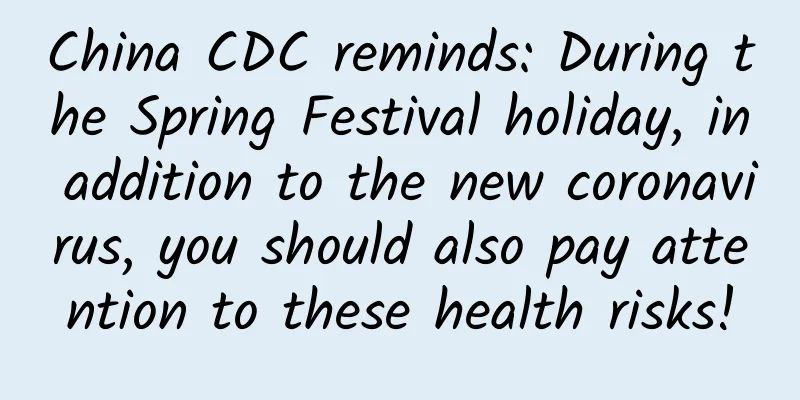Does reheating rice cause cancer? These two types of food are really not suitable for reheating →

|
gossip “Reheating rice can cause cancer!” White rice is the "worst" staple food. If it is reheated and eaten, it is likely to produce toxic carcinogens and endanger your health. Rumor Analysis That is not the case. Properly stored rice will not cause cancer when heated normally. The rumor circulating online is that the rice has been contaminated and produced toxins before heating or that improper cooking has produced acrylamide (this is not a problem unique to rice). In our daily lives, we often encounter leftovers. In order to avoid waste, most people store these leftovers properly and reheat them for the second meal. However, at some point, a saying that "reheating rice can cause cancer" began to circulate, making many people, especially workers who have to bring their own food the next day, afraid of reheating rice. Many people worry that once unfinished rice is reheated and eaten, it will pose a huge threat to health. So, does reheating rice really cause cancer? Copyrighted stock images, no reproduction is authorized Does reheating rice cause cancer? Let me give you the answer first: reheating properly stored rice will not cause cancer. The main component of rice is carbohydrates, of which starch is an important part. When rice is first cooked, the starch molecules undergo certain changes, making it more digestible but not producing carcinogens that are harmful to the human body. When we reheat rice, we are actually reheating the rice to evaporate the water and gelatinize the starch. In this process, the ingredients in the rice will not undergo carcinogenic transformation due to heating. On the contrary, proper heating can kill bacteria and other microorganisms that may exist in the rice, improving food safety. There are two versions of the rumor behind the saying that "reheating rice will produce carcinogens". One is that reheated rice contains acrylamide, and the other is that reheated rice contains Bacillus cereus. 1. Acrylamide Acrylamide is mainly formed during the cooking process of high-carbohydrate foods (above 120°C), especially in the temperature range of 140°C to 180°C. This substance is mainly found in foods that are fried or baked at high temperatures, such as French fries, bread, French fries, potato chips, biscuits, etc., which often undergo the Maillard reaction (becoming mushy or brown) during processing. However, rice is usually heated at a low temperature and for a short time, so it is not easy to produce acrylamide. In addition, although acrylamide is classified as a Class 2A carcinogen by the International Agency for Research on Cancer, which means it is a possible carcinogen to humans. This means that there is sufficient evidence that it causes cancer in animals, but insufficient evidence that it causes cancer in humans. According to the evaluation report on acrylamide by the Joint Expert Committee on Food Additives (JECFA), under normal circumstances, moderate intake of acrylamide from food is unlikely to cause damage to the human nervous system, nor will it cause significant reproductive and developmental problems. 2. Bacillus cereus Bacillus cereus is a bacterium that releases harmful toxins. Because it has a "shell", this bacterium is very heat-resistant and difficult to kill by heating. Since it will multiply in large quantities between 28℃ and 35℃, cooked rice is easily infected by this bacterium when it is not refrigerated for a long time. Bacillus cereus is divided into two types: enteric and non-enteric. Rice is generally more likely to be contaminated by the enteric type. Eating contaminated rice can cause digestive symptoms such as vomiting or diarrhea, and because the bacteria secrete toxins, even reheating the food can cause poisoning. This kind of bacteria grows slowly at 10℃, so the leftover rice should be sealed and refrigerated in the refrigerator as soon as possible. This way it is not easy to be contaminated, and even if it is contaminated, it will not reproduce in large numbers. Therefore, Bacillus cereus is produced by improper storage of rice, not by secondary heating. Copyrighted stock images, no reproduction is authorized These are really not recommended for secondary heating Although there are many types of food that cannot be heated, in fact, there are mainly two types of food that are not suitable for reheating: 1. Foods rich in polyunsaturated fatty acids Representative foods: salmon, flaxseed, soybean oil, etc. Reason analysis: These foods are rich in polyunsaturated fatty acids such as omega-3 fatty acids, which are essential for cardiovascular health. Although they are valuable, polyunsaturated fatty acids are very delicate and cannot withstand repeated high temperatures. They are also prone to oxidation and deterioration if left for a long time. High-temperature heating, especially cooking methods such as frying, will cause unsaturated fatty acids to oxidize and produce harmful substances such as free radicals and trans fatty acids, which not only reduce nutritional value but also may increase health risks. Therefore, it is best to cook and eat them now. If you can't finish them, it is recommended to use low-temperature cooking methods such as steaming or cold mixing. 2. Foods rich in nitrates Representative foods: leafy vegetables such as spinach, cabbage, purslane, and amaranth. Reason: Repeated heating of green leafy vegetables may cause the loss of water-soluble vitamins (such as vitamin C and B vitamins) and minerals (such as potassium and magnesium) because these nutrients are more easily dissolved in water and lost with the water. In addition, green leafy vegetables contain more nitrates, and the longer they are stored, the higher the nitrite content. Although they can be reheated, it is not recommended to eat leftover leafy vegetables. Copyrighted stock images, no reproduction is authorized You should know these things about heating food correctly Scientific heating will not only not produce harmful ingredients, but can help us reduce the harm of bacterial contamination. When heating food, different heating methods have different characteristics. 1. Recommendations for using different heating tools Microwave heating: Fast and convenient, suitable for most ingredients, but may cause food to heat unevenly. 1. Put the food in a container suitable for microwave heating. Do not choose a metal container. It is best to choose a container made of porcelain, glass or PP. 2. Cover with a lid or microwave-safe plastic wrap, leaving a small hole to release steam. 3. Because microwaves heat unevenly, rice and steamed buns will become dry after heating. Before heating, sprinkle some water on the surface of the food. Oven heating: can make the surface of food crispy and improve the taste. 1. Different foods have different heating times and modes. The oven temperature and heating time need to be adjusted according to the type and thickness of food. 2. Not suitable for foods with high water content. Steamer heating: suitable for vegetables, buns, etc., which can better retain the nutrition and moisture of food. 1. Add water to the steamer, making sure the water does not touch the food. 2. Heat to appropriate temperature, pay attention to the amount of steam and avoid overheating. Heating in a wok: Suitable for heating leftovers, it can quickly raise the temperature and make the food dry again. However, you need to control the heat and the frequency of stir-frying, otherwise the wok will easily get burnt. 2. Recommendations for heating different types of food Meat: Make sure meat is thoroughly heated to a safe internal temperature of 70°C to kill any bacteria that may be present. However, do not overheat to prevent the meat from becoming dry and tough. Seafood: Seafood ingredients such as fish and shrimp should not be heated for a long time because the protein is prone to aging and hardening. It is recommended to heat them at low temperature for a short time. Vegetables: The vitamins in vegetables are easily lost at high temperatures, so it is recommended to use a microwave oven or steam them for secondary heating to reduce the loss of nutrients. Rice and pasta: Rice and pasta should be thoroughly heated during secondary heating to avoid the risk of food poisoning. Soy products: When secondary heating soy products such as tofu, be careful not to destroy the shape. They can be gently heated by steaming or microwaving. Looking in the mirror of rumors No matter what it is, as long as it is related to cancer, many people who don't know the truth will be terrified. This feeling is understandable, but everyone should also be careful to discern these exaggerated information. If rice is properly stored and reheated before eating, it is not likely to cause cancer, but can reduce food safety risks. Leftover rice mixed with fragrant chopped eggs and diced vegetables is nutritious and delicious. Try it now. References [1] Feng Jinfang, Shi Zhixiong, Wu Yongning, et al. Determination of nitrate content in spring vegetables in Beijing and assessment of residents’ exposure [J]. Chinese Journal of Food Hygiene, 2007, 18(6): 514–517. [2] EFSA. Acrylamide. https://www.efsa.europa.eu/en/topics/topic/acrylamide [3]Cleveland Clinic.Bacillus Cereus.https://my.clevelandclinic.org/health/diseases/23581-bacillus-cereus [4]WHO.Five keys to safer food manual. https://www.who.int/publications/i/item/9789241594639 [5]WHO.Health implications of acrylamide in food: report of a joint FAO/WHO consultation, WHO Headquarters, Geneva, Switzerland, 25-27 June 2002 (Food safety consultations) | Clc[J].Food Contamination, 2002. Author | Li Chun, registered dietitian in China Review | Zhang Yu, researcher/PhD, Chinese Center for Disease Control and Prevention, national health science expert |
<<: #千万IP创科普# The truth about Scottish Fold cats: the genetic pain behind their cuteness
>>: Suspended! Why is Super Typhoon Makar so terrifying? What is eyewall replacement?
Recommend
Review of Double 11 marketing cases in 2018! Recommended for collection!
It’s Double 11 again this year, and the carnival ...
Build offline event promotion skills from 0-1!
There are activities every day, but good activiti...
"Sun and Moon Shine Together" and Built-in "Power Bank"! How Amazing Is It?
Recently, my country's first new power statio...
WeChat Pay can now withdraw cash for free! Official tips
Many friends are looking for ways to withdraw cas...
Brush your teeth after meals, trim your nails frequently... these seemingly "hygienic" good habits, but you may have been doing them wrong!
We have been instilled with the awareness of &quo...
Apple is determined to turn to India, even if the product quality is not good enough, it will support the migration of the supply chain
Since the beginning of the millennium, China has ...
Advertising skills for home furnishing industry
1. Project Introduction A self-installing superma...
2021 Xiaohongshu High-efficiency Marketing Manual
Xiaohongshu is a lifestyle sharing platform that ...
Squall line is coming! Thunder, lightning, gale and hail are coming!
In recent years, Longyan, Fujian has experienced ...
Kuaishou Operation Guide: How to operate and promote vertical accounts on Kuaishou
01Settlement and Binding 1. You can register a Ku...
Jiankun's "English Level 6 Listening Comprehension Class" helps you thoroughly understand the Level 6 listening comprehension
Youdao Kaoshen Listening Boss Jiankun Gold Medal ...
Android works very well abroad, but why is it so slow and has so many rogue apps in China?
As we all know, ever since CCTV exposed the traps...
When performing minimally invasive heart surgery, why do we need to put a "plaster" on the patient first?
In every minimally invasive cardiac surgery anest...
Can the Wenchang Tower be placed in the living room? It is best to place it in Wenchang position
In ancient times, there was a star called Wenchan...









